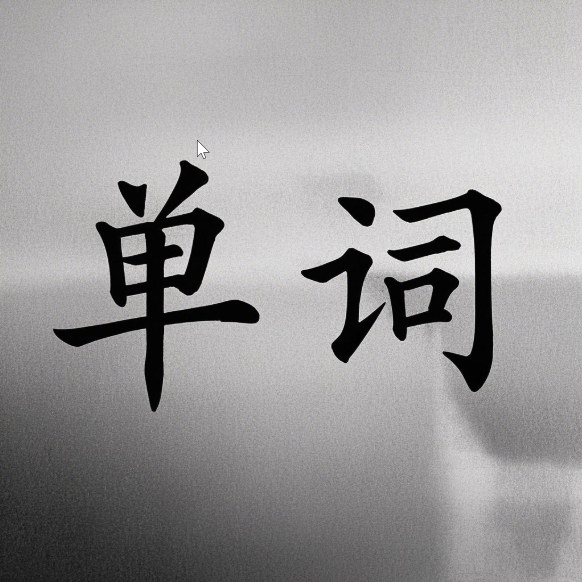chocking
简明释义
v. 塞满;用楔子挡住(chock 的现在分词)
英英释义
Chocking refers to the act of blocking or obstructing something, often used in the context of securing a vehicle or object in place to prevent movement. | chocking指的是阻塞或阻挡某物的行为,通常用于确保车辆或物体固定不动,以防止其移动。 |
单词用法
塞满了的 | |
轴承座 |
同义词
| 窒息 | 他被一块食物噎住了。 | ||
| 窒息的 | 房间里的烟雾让人窒息。 | ||
| 扼杀 | 蛇正在扼杀它的猎物。 |
反义词
| 放松的 | 经过漫长的一天,我喜欢用一本好书来放松自己。 | ||
| 舒缓的 | 舒缓的音乐帮助我很快入睡。 |
例句
1.Underdevelopment is chocking: the squalor, disease, unnecessary deaths, and hopelessness of it all!
不发达是骇人听闻的,这就是肮脏、疾病、不必要的死亡和对所有这些东西的绝望!
2.The open torque is little and the valve can self compensate after wearing because of big chocking force. The seal performance is good and stable.
开启力矩小,楔紧力大。磨损后,能自行补偿,密封性好,性能稳定。
3.These heat waves also reached Pompeii, chocking to death anyone who had survived the initial eruption.
这股热浪也传到了庞贝城,将逃过第一次火山爆发的生还者全都呛死。
4.This is chocking, chocking too that this video is on so many websites without blurring out parts or some editing.
这真让人窒息,这个视频出现在了很多网站上,而且没有一点模糊处理和剪辑的部分。
5.Flame stability has no relation with the ethylene guide flame, and the exit chocking ratio is an important factor for the combustor pressure rising.
同时发现火焰稳定与乙烯引导火焰无关,出口堵塞比是燃烧室压力提升的一个重要影响因素。
6.The hall was filled with chocking clouds of smoke.
大厅里充满了使人透不过气来的烟雾。
7.The child was in danger of chocking on a small toy, so we quickly took it away from him.
那个孩子有窒息chocking在一个小玩具上的危险,所以我们迅速把它拿开了。
8.The restaurant staff was trained to help someone who was chocking during a meal.
餐厅员工接受过培训,以帮助在用餐时遇到窒息chocking的人。
9.He tried to speak, but he was chocking on his words due to nervousness.
他试图说话,但由于紧张,他的言辞变得窒息chocking。
10.When the dog started chocking on its food, the owner rushed to help.
当狗开始窒息chocking于它的食物时,主人急忙去帮忙。
11.She felt chocking when she accidentally swallowed a piece of food too quickly.
她感到窒息chocking,因为她不小心吞下了一块食物太快了。
作文
In the world we live in, there are numerous dangers that can arise unexpectedly. One of the most alarming situations is when someone experiences a medical emergency due to an obstruction in their airway. This phenomenon, known as chocking (窒息), can happen to anyone, anywhere, and at any time. It is crucial to understand what chocking (窒息) is, how it occurs, and what steps can be taken to prevent it or respond effectively when it happens.Chocking (窒息) occurs when an object, often food, becomes lodged in the throat or windpipe, preventing air from flowing into the lungs. This can lead to a lack of oxygen and can result in serious complications or even death if not addressed promptly. Many people may not realize how quickly chocking (窒息) can occur; for example, a person may be eating a meal and suddenly find themselves unable to breathe because a piece of food has blocked their airway.The causes of chocking (窒息) are varied. In adults, it often happens when food is eaten too quickly or not chewed properly. In children, small toys or objects can easily become a choking hazard. It is essential for parents and caregivers to be vigilant about the items that children have access to, as well as to supervise mealtimes closely. Understanding the risks associated with chocking (窒息) is the first step in prevention.To prevent chocking (窒息), one should adopt safe eating practices. For instance, cutting food into smaller pieces, chewing thoroughly, and avoiding talking or laughing while eating can significantly reduce the risk. Additionally, it is advisable to avoid giving young children foods that are hard, round, or slippery, such as whole grapes or nuts, which can easily cause chocking (窒息).In the event that someone does begin to choke, knowing how to respond can save their life. The Heimlich maneuver is a widely recommended technique for dislodging an object from the throat. To perform this maneuver, one must stand behind the individual who is choking, wrap their arms around their waist, and deliver quick upward thrusts just above the navel. This action can create enough pressure to expel the object causing the chocking (窒息). It is important to note that if the person loses consciousness, calling emergency services immediately is critical.Education on chocking (窒息) prevention and response should be a priority in communities. First aid training courses often include information on how to handle choking emergencies, and these should be made accessible to all. Schools, workplaces, and public spaces should consider implementing programs that teach individuals how to recognize the signs of chocking (窒息) and how to react appropriately.In summary, chocking (窒息) is a serious issue that can occur without warning. By understanding its causes, taking preventive measures, and knowing how to respond in an emergency, we can help reduce the incidence of choking incidents. Awareness and education are key to ensuring that everyone knows how to protect themselves and others from the dangers of chocking (窒息). Let us work together to create a safer environment for everyone, especially for those who are most vulnerable, such as young children and the elderly.
